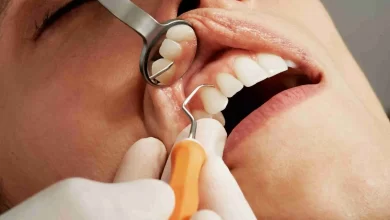What Is the Purpose of a Veneers Procedure?
You’ve probably heard of veneers before, but you may not know exactly what the procedure is for. Read about the purpose of veneers and if they can help your teeth.
What Are Veneers?
Veneers are a cosmetic dental procedure that conceals tooth imperfections. Made from either porcelain or composite resin, veneers adhere to the natural teeth. Composite resin tends to be less durable overall. As a result, porcelain is the preferred option due to its sturdiness and aesthetics.
The Application Process
Each material uses a different application processes. Porcelain veneers start with a mold of the patient’s tooth or teeth. A lab composes the veneers and sends the customized product back to the dentist. The dentist then removes a little bit of enamel from the tooth to create space for the veneer and applies the veneer to the tooth with a little bit of adhesive.
To apply composite resin veneers, the dentist starts by removing more enamel from the natural tooth in comparison to the porcelain process. They then mold the material to the preferred shape on the tooth before cleaning and polishing the area.
Why Do People Get Veneers?
An individual might need the veneers procedure to improve their smile for several different reasons. They may want to conceal a cracked or crooked tooth. Perhaps there are large spaces between the teeth and the patient prefers veneers over braces.
Maybe there’s a discolored tooth that doesn’t match the rest. In the latter case, dentists take their time to match the veneers to the patient’s teeth color for the most natural look possible. When the procedure is complete, the patient will regain confidence in their smile.
How Much Does the Procedure Cost?
Veneers are great cosmetic solutions to enhance a patient’s smile. However, they do come with a price tag. Porcelain veneers are more expensive due to their strength and ability to last longer. The cost range is between $900 and $2,500 per tooth.
Composite veneers cost anywhere from $400 to $1,500 per tooth. The easier application process and ability to last about five years make this a less costly procedure in comparison to porcelain veneers.
A Few Final Tips To Keep in Mind
If you’d like to alter a part of your smile, veneers are a tremendous resolution. However, you should know a few pieces of information first.
Tip #1
Dental insurance doesn’t typically cover veneers. Since veneers are a cosmetic procedure and not a medical necessity, you’ll most likely pay out of pocket.
Tip #2
Veneers are available only for individuals with good oral hygiene. People with gum disease or too many recurring cavities are ineligible for the procedure. Managing any dental complications before applying veneers is essential.
Tip #3
Although veneers cannot succumb to cavities, maintaining great oral hygiene after the procedure is important. The natural teeth beneath the veneers could still decay with improper hygiene practices.


I simply could not go away your web site prior to suggesting that I really enjoyed the standard info a person supply on your guests Is going to be back incessantly to investigate crosscheck new posts